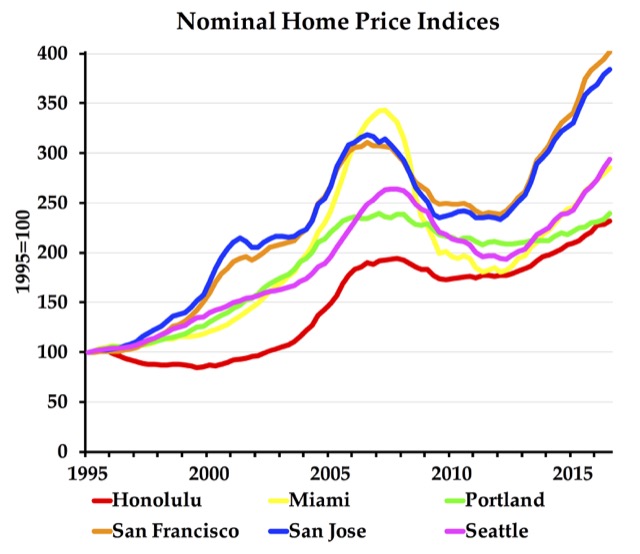That sound you hear the next time you go to the beach (at least on the West Coast) may be the Australian housing bubble popping. After Hong Kong, Sydney is rated the second-least affordable housing market in the world (see page 12), with median home prices more than twelve times median household incomes–and that’s based on 2014 data. Prices since then have gone up much faster than incomes.
As of September, prices in the country as a whole are 7.2 times incomes; that’s more than all but a handful of urban areas in the United States. Home prices and price-to-income ratios have both risen sharply since 2000. The country’s housing stock is worth nearly US$4.5 trillion, or roughly 20 percent of the U.S. housing market, which is pretty high for a country that only has 7.5 percent of the U.S. population.
Economists have been expecting Australian home prices to collapse for some time, and it hasn’t happened yet. But the UBS Housing Bubble Index ranks Sydney as the fourth-riskiest housing market in the world, after Vancouver, London, and Stockholm.








